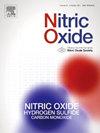减少硝酸盐的细菌和动脉高血压之间是否存在联系?系统回顾
IF 3.2
2区 生物学
Q2 BIOCHEMISTRY & MOLECULAR BIOLOGY
引用次数: 0
摘要
一氧化氮是一种血管扩张分子,作用于血压(BP)控制,其产生可通过口服或肠道硝酸盐还原细菌减少硝酸盐。然而,硝酸盐还原菌与动脉高血压(HTN)之间的关系仍存在争议。目的系统回顾口腔和肠道硝酸盐还原菌的丰度与人类HTN的发生之间是否存在关联。检索数据库和入选标准:检索edline、Scopus、Cochrane Library、EMBASE、LILACS、Web of Science、Livivo、ProQuest Dissertations和谷歌Scholar,检索截止日期为2024年2月10日。以下研究被纳入:(1)观察性研究或临床试验;(2)纳入HTN(收缩压≥130 mmHg和/或舒张压≤gt)的成人(≥18岁);80 mmHg和/或使用降压药物);(3)与非htn成人比较(或不比较);(4)利用新一代测序微生物组分析鉴定口腔和/或肠道硝酸盐还原菌的细菌分类群。结果共检索到9365篇文献,按照纳入和排除标准纳入研究28篇;23篇文章评估肠道微生物群,4篇评估口腔微生物群,1篇评估两者。研究中并没有一致地显示硝酸盐还原细菌的消耗。纳入的研究报告了口腔或肠道微生物群中硝酸盐还原菌属或种类的减少、增加和无变化。结论口腔和肠道硝酸盐还原菌的丰度与人类HTN的发生无相关性。普洛斯普洛斯识别号CRD42022315891。本文章由计算机程序翻译,如有差异,请以英文原文为准。
Is there a link between the abundance of nitrate-reducing bacteria and arterial hypertension? A systematic review
Context
Nitric oxide is a vasodilator molecule that acts on blood pressure (BP) control, and its production can occur through the reduction of nitrates by oral or intestinal nitrate-reducing bacteria. However, the relationship between nitrate-reducing bacteria and arterial hypertension (HTN) remains under debate.
Objective
Systematically review if there is an association between the abundance of oral and intestinal nitrate-reducing bacteria and the occurrence of HTN in humans.
Databases and eligibility criteria
MEDLINE, Scopus, Cochrane Library, EMBASE, LILACS, Web of Science, Livivo, ProQuest Dissertations, and Google Scholar were searched for eligible articles until February 10th, 2024. Studies were included if they: (1) were observational studies or clinical trials; (2) included adults (≥18 years old) with HTN (systolic BP ≥ 130 mmHg and/or diastolic BP > 80 mmHg and/or use of BP lowering medication); (3) compared (or not) to no-HTN adults; and (4) used next-generation sequencing microbiome analysis to identify bacterial taxa in the oral and/or gut nitrate-reducing bacteria.
Results
The search identified 9365 articles, and 28 were included in the study after applying the inclusion and exclusion criteria; 23 articles assessed the gut microbiota, 4 assessed the oral microbiota, and 1 assessed both. Depletion of nitrate-reducing bacteria was not consistently shown in the studies. The included studies reported reduction, increase, and no change in the nitrate-reducing bacteria genera or species in oral or gut microbiota.
Conclusion
We found no association between the abundance of oral and gut nitrate-reducing bacteria and the occurrence of HTN in humans.
Registration
PROSPERO identification number CRD42022315891.
求助全文
通过发布文献求助,成功后即可免费获取论文全文。
去求助
来源期刊

Nitric oxide : biology and chemistry
生物-生化与分子生物学
CiteScore
7.50
自引率
7.70%
发文量
74
审稿时长
52 days
期刊介绍:
Nitric Oxide includes original research, methodology papers and reviews relating to nitric oxide and other gasotransmitters such as hydrogen sulfide and carbon monoxide. Special emphasis is placed on the biological chemistry, physiology, pharmacology, enzymology and pathological significance of these molecules in human health and disease. The journal also accepts manuscripts relating to plant and microbial studies involving these molecules.
 求助内容:
求助内容: 应助结果提醒方式:
应助结果提醒方式:


